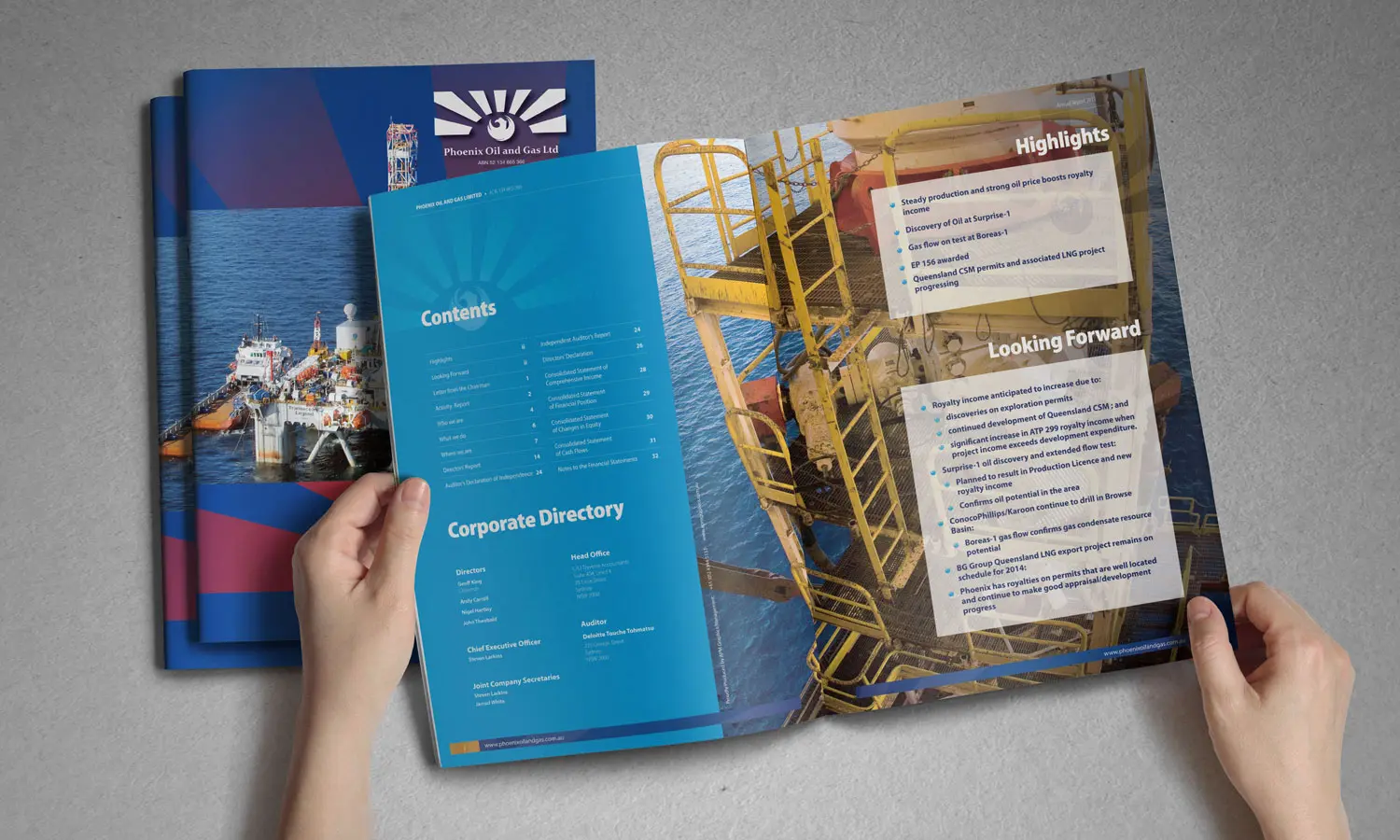Excellence in reporting is a function of transparency and accountability with priority given to the recognition and effective communication of issues that are important to all stakeholders.
We have compiled a set of guidelines to ensure that you get the most out of your Annual Report.
Overview/Objectives/Highlights
The early pages of the report should cover:
- the organisation’s history and profile;
- mission/vision/purpose/values and specific objectives;
- strategies for achieving objectives/outcomes;
- highlights of the year at a glance, including:
- progress towards achievement of the purpose, values and objectives;
- important events from the year and the outlook;
- performance measures and indicators, key financial and non-financial features covering performance over two years and percentage changes;
- a summary of key shareholder/stakeholder information.
Review of operations or activities
Describe the operations as a whole, with comparisons, which should include:
- details of business risks and profit sensitivity to competition, the business environment, market share, export performance, product price, interest rates and foreign exchange;
- any Total Quality Management (TQM) programs or standards adopted which may include ISO 9000 Quality Management Systems, ISO 14000 Environmental Management, and Six Sigma, and compliance with these programs/standards;
- any strategic management programs adopted including the Balanced Scorecard and Digital Dashboard, and the performance outcomes achieved, represented through key performance measures/indicators;
- capital expenditure(capex) – distinguishing between operational capex (recurring business expenditure) and expansion/acquisition capex;
- research and development and technology-related issues;
- impact of government policies;
- environmental performance – discussion of the impact on the environment and actions to improve performance;
- community involvement and/or philanthropy;
- details of political contributions;
- outlook for the organisation;
- a concise financial report with relevant commentary (cross-referenced), discussion and analysis of financial and non-financial results which should provide useful financial information for stakeholders explaining how the financial results were achieved and should be presented in a reader-friendly format, supported by easily understood tables and graphics;
- a summary of key information on each division including its purpose and strategies; major products and services; major brand names and trademarks; divisional funding; financial results; locations and markets, including growth and outlook;
- details of divisional performance and costs;
- outlook/objectives for the following year;
- marketing arrangements including: world market position, competition, market share, marketing and pricing strategies, major supply sources, and exports.
Management, personnel, industrial relations and safety
Areas which should be covered include:
- the Board of Directors – including photos, experience, qualifications, terms of appointment, and financial and other benefits;
- senior executives – including individual or collective photos of key staff, their experience, responsibilities and qualifications;
- measurement and disclosure of all forms of remuneration and benefits to directors and senior executives of the entity as well as related parties. Examples include share-based payments, options, bonuses, pensions, medical benefits, termination benefits, travel and accommodation benefits, and other benefits required by both accounting standard AASB 124 Related Party Disclosures and remuneration requirements under the Corporations Act;
- the organisation or corporate structure;
- personnel issues – including training and development; industrial relations; equal employment initiatives; productivity; relevant industrial awards; enterprise agreements; workforce details including full-time equivalents/productive labour and an explanation for significant variations in staff numbers; union representation; wages and superannuation; and employee share plans;
- outcomes of action taken by external authorities regarding monopolistic or anti-trust regulations;
- occupational health and safety – including policies and procedures, lost-time injuries, any fatalities or serious injuries and significant breaches of occupational health and safety laws. Include both positive and negative outcomes. (For greater detail see OH&S Reporting Guidelines.)
Corporate Governance
A detailed statement must be included in the report to reflect a Corporate Government policy which should:
- establish and disclose the respective roles and responsibilities of board and management;
- a board of effective composition, size and commitment to adequately discharge its responsibilities and duties;
- actively promote ethical and responsible decision making;
- have a structure to independently verify and safeguard the integrity of their financial reporting;
- promote timely and balanced disclosure of all material matters concerning the company;
- respect the rights of shareholders and facilitate the effective exercise of those rights;
- establish a sound system of risk oversight and management and internal control;
- ensure that the level and composition of remuneration is sufficient and reasonable and that its relationship to performance is clear.
Financials
Details and analysis of financial performance, financial statements and related notes must comply with legislative requirements, International Financial Reporting Standards and appropriate equivalent accounting standards.
Coverage should include:
- a Balance Sheet
- an Income or Operating Statement
- a Cash Flow Statement
- Concise Notes in conformity with Accounting Standards appropriate to International Financial Reporting Standards or Australian or New Zealand equivalents, explaining major changes in assets and liabilities – including specific information (rather than general statements) eg. impairment and write-off of intangible assets;
- a signed statement from the directors as to their view of the financial statements;
- a signed report from the auditor;
- a signed statement from key executives.
Features of Notes should include, but are not limited to:
- an index;
- description or treatment of unusually large items, eg. disposal of assets, discontinued operations or restructuring costs;
- details of significant policies such as derivatives and intangibles;
- revenue recognition;
- reconciliations of classes of non-current assets;
- cross-references between the Statements and the Notes.
Financial reporting should include comparative information for key financial and non-financial activities covering at least five (5) years, where possible and may include:
- key Balance Sheet and Income Statement items, ratios, gearing, liquidity and performance indicators;
- physical data incorporating changes in key performance indicators;
- an explanation or definition of the main terms used, along with the explanatory notes.
Miscellaneous
Other items significant to shareholders which should be included are:
- an index of contents, preferably with some description;
- a table of definitions and/or glossary of terms;
- the locations of major activities – include maps (where appropriate), addresses, website, email, telephone and fax numbers;
- a calendar of events;
- discussion of shareholder value, and shareholder and stakeholder benefits;
- discussion of liquidity in share trading and dividend policy;
- shareholder listing covering at least the top 20 shareholders in each class of share or option;
- a table of announcements to Stock Exchanges (continuous disclosure);
- the availability of the report through print or electronic means, including the comprehensiveness and ease of access to information via the Internet.



